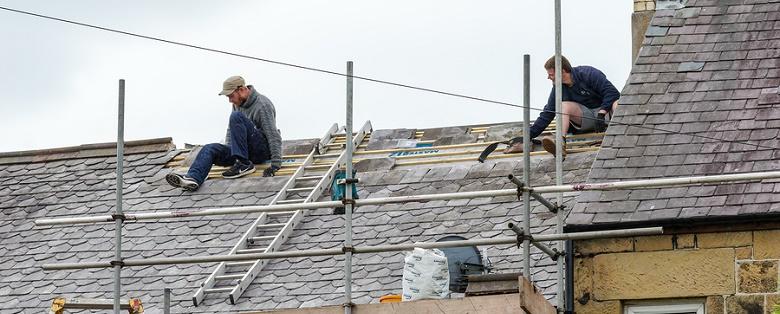
From the outside, the roof on a home or building may seem like a simple, protective layer of materials that keep the weather out. Yet in reality, roofing is made up of multiple layers of material that work together to protect the structure.
Underlayment is an important component used by roofing services to create the most watertight barriers over a structure. When used correctly, various types of underlayment ensure that external shingles and other materials are as protective as possible.
What Is Underlayment?
Underlayment is a watertight fabric barrier that is installed between the top layer of roofing material and the wood decking. Underlayment is rolled out over the decking and attached to create a leak-resistant, yet breathable barrier between the various layers of the roof. It is made from a variety of material and comes in different weights. It can also protect against the chemical degradation that may occur when resins in the decking react with manufactured shingles.
Some underlayment requires fasteners, while other types are self-adhering. It is manufactured in a variety of types that conform to certain climate and safety codes. So using the proper one is important to ensure the best roof installation.
Different Types of Underlayment
The primary function of all underlayment installed by roofing services is to act as a moisture barrier underneath shingles, metal panels, and all other external material. Because it is water resistant yet breathable, underlayment promotes good ventilation while helping prevent damage caused by leaks. Some installations require underlayment that possesses additional qualities to keep its moisture resistance while preventing other issues. Following are the various types of underlayment:
- Standard Breathable - Provides adequate leak prevention and ventilation to protect the decking and structure in most pitched roof installations. It is available in multiple weights with heavier weight products being more resilient and longer lasting for greater protection.
- Waterproof - Waterproof protection is provided for installations on low-slope or flat roofs as well as other areas where there is a greater chance of leaks. This material is generally used where standing or slow-draining water could be an issue or to protect in susceptible leak areas.
- Fire Resistant - Roofing made of wood shingles or shakes requires special fire-resistant underlayment to help protect the structure in the event of a fire. For any wood roof to receive a Class A fire resistance rating, the installation must include this special fire-resistant underlayment. Besides being more protective, it may also be required by insurance companies and could qualify homeowners for a discount.
- Ice Barrier - In climates with a lot of snow and ice where ice damming is a problem, roofing services may use a special durable underlayment designed to reduce this issue. Ice barrier underlayment is thicker. It seals and self-adheres to the decking to reduce the chance of leaks around fasteners. It requires a different installation than standard underlayment so it covers more of the decking at the top and bottom. In some instances, multiple layers may be required.
Underlayment is required in all roofing installations and should be chosen based on the local climate, roof design, and type of external material used in the installation. Roofing services should use special underlayment products designed to provide the extra protection required for more challenging usage. When used appropriately, underlayment offers both water tightness and other important protective and ventilation features as well!